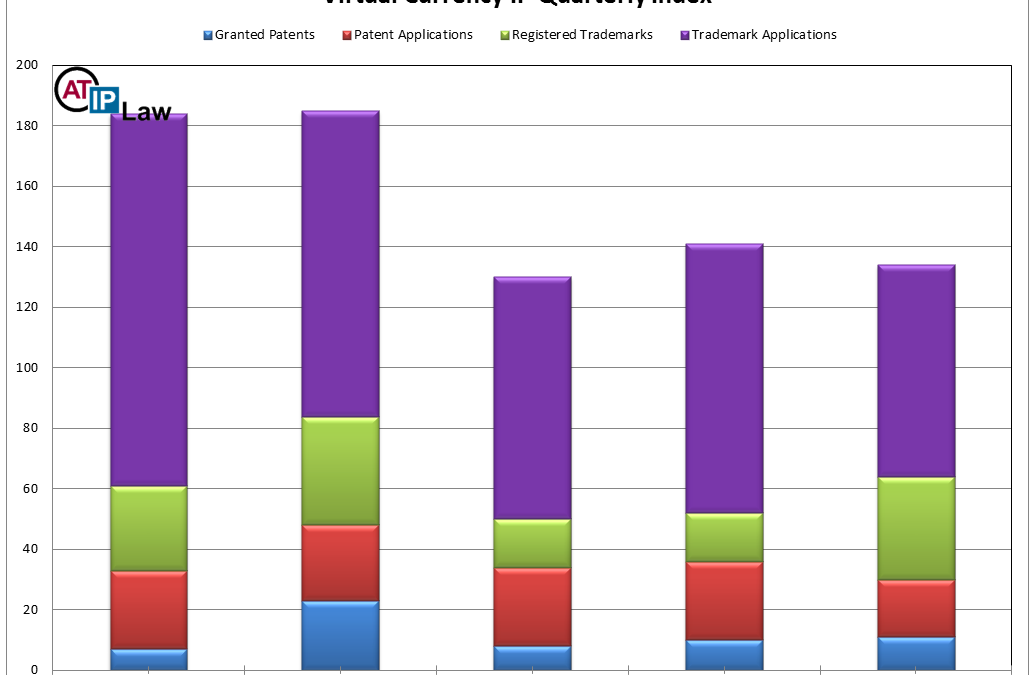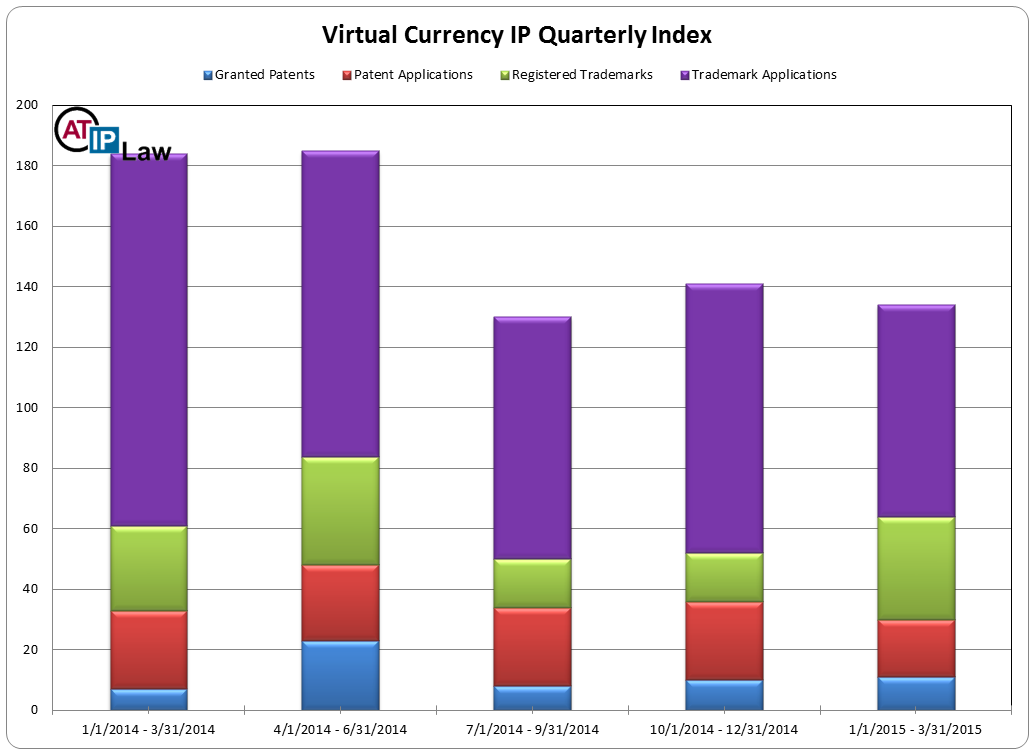Virtual Currency Intellectual Property Index Q2 2015
The number of virtual currency patents that were granted increased 10%. The number of virtual currency patent applications that were published decreased by 27%.
The number of virtual currency related trademarks that were registered increased by 112.5%. The number of virtual currency related trademarks applications that were filed decreased by 21%.
Overall the Virtual Currency Intellectual Property Index decreased 5% from the first quarter of 2015. The decrease in the number of published patent and new trademark applications indicates a slowing rate of production of new intellectual property related to virtual currency.
Definitions
As we use it here, “virtual currencies” include digital currencies, cryptocurrencies and other innovative electronic currencies. Virtual currencies may include Bitcoin, Darkcoin, Dogecoin, Litecoin, Mastercoin, Namecoin, NXT, Peercoin, Ripple, etc.
The Virtual Currency Intellectual Property Index tracks patent applications and patents that have been published or granted by the U.S. Patent and Trademark Office. Although most applications are published, a small percentage (about 7% nation wide) are not published for various reasons. Patent applications are generally published 18 months after the first priority date of the application. Published applications have not necessarily been examined and some applications will be abandoned after publication. Once an application is examined and approved and all fees and formalities have been satisfied, the Patent Office grants a patent. We attempt to limit the Virtual Currency Intellectual Property Index to patents and patent applications that are substantially related to virtual currencies. Patent records that make only a passing reference to a virtual currency are generally not included.
The Virtual Currency Intellectual Property Index also tracks trademarks applications that have been filed in the U.S. Patent and Trademark Office. Once a trademark application has been examined and approved by the Trademark Office and all requirements have been satisfied, it becomes a registered trademark.
More Information
Please see our intellectual property page for more information on intellectual property, our patent page for more information on patents and our trademark page for more information on trademarks.
Please contact us if we can be of assistance to you.


